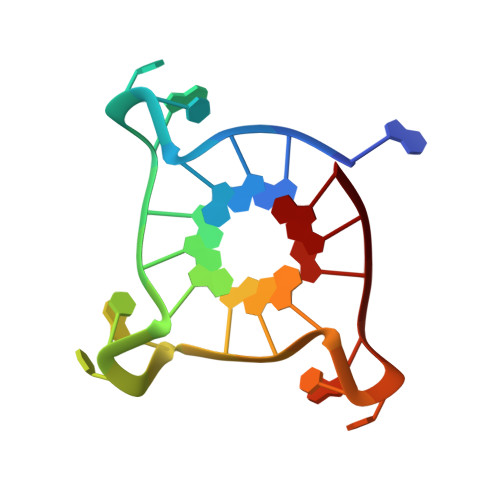Water spines and networks in G-quadruplex structures.
Li, K., Yatsunyk, L., Neidle, S.(2021) Nucleic Acids Res 49: 519-528
- PubMed: 33290519
- DOI: https://doi.org/10.1093/nar/gkaa1177
- Primary Citation of Related Structures:
7KLP - PubMed Abstract:
Quadruplex DNAs can fold into a variety of distinct topologies, depending in part on loop types and orientations of individual strands, as shown by high-resolution crystal and NMR structures. Crystal structures also show associated water molecules. We report here on an analysis of the hydration arrangements around selected folded quadruplex DNAs, which has revealed several prominent features that re-occur in related structures. Many of the primary-sphere water molecules are found in the grooves and loop regions of these structures. At least one groove in anti-parallel and hybrid quadruplex structures is long and narrow and contains an extensive spine of linked primary-sphere water molecules. This spine is analogous to but fundamentally distinct from the well-characterized spine observed in the minor groove of A/T-rich duplex DNA, in that every water molecule in the continuous quadruplex spines makes a direct hydrogen bond contact with groove atoms, principally phosphate oxygen atoms lining groove walls and guanine base nitrogen atoms on the groove floor. By contrast, parallel quadruplexes do not have extended grooves, but primary-sphere water molecules still cluster in them and are especially associated with the loops, helping to stabilize loop conformations.
Organizational Affiliation:
Department of Chemistry and Biochemistry, Swarthmore College, Swarthmore, PA 19081, USA.
















